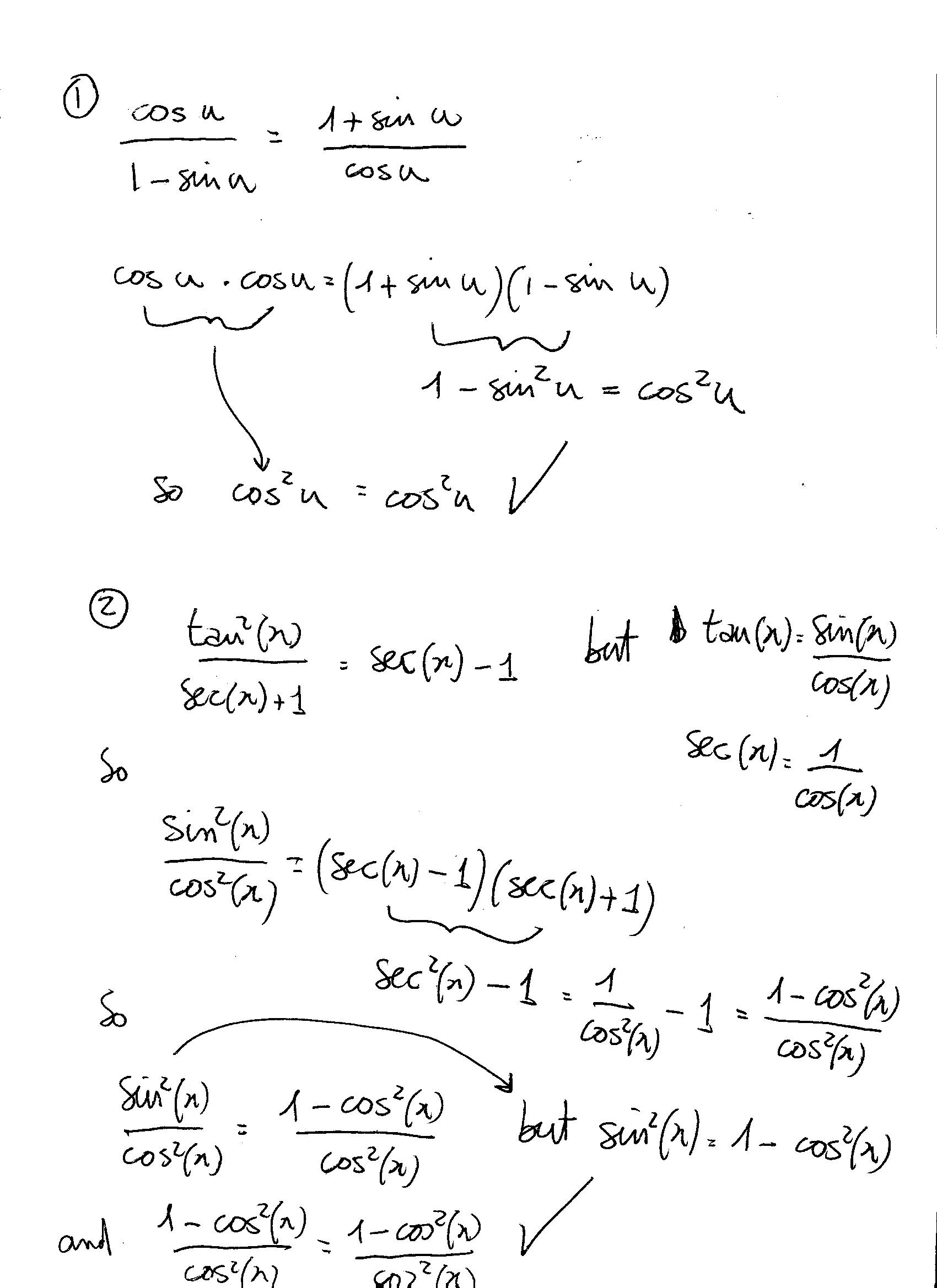Question #f4b07
2 Answers
I tried this:
Explanation:
Have a look:

Please see the proofs below.
Explanation:
Verify:
Multiply the left side by 1 in the form of
The denominator becomes the difference of two squares:
Substitute
The cosine in the numerator cancels one of the cosines in the denominator:
Verified.
Verify:
Multiply the left side by 1 in the form
The numerator becomes the difference of two squares:
Substitute
The fraction becomes 1:
Verified.

